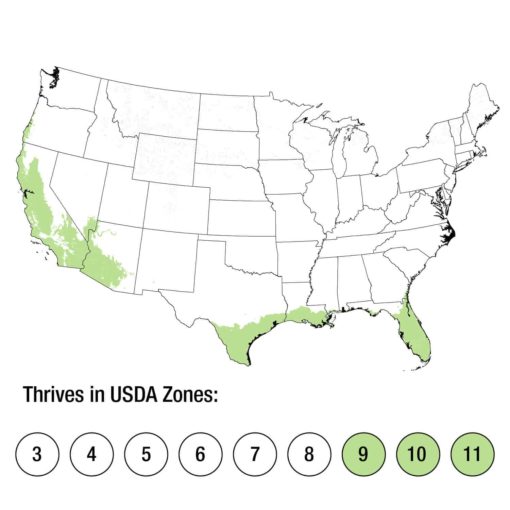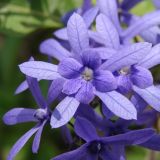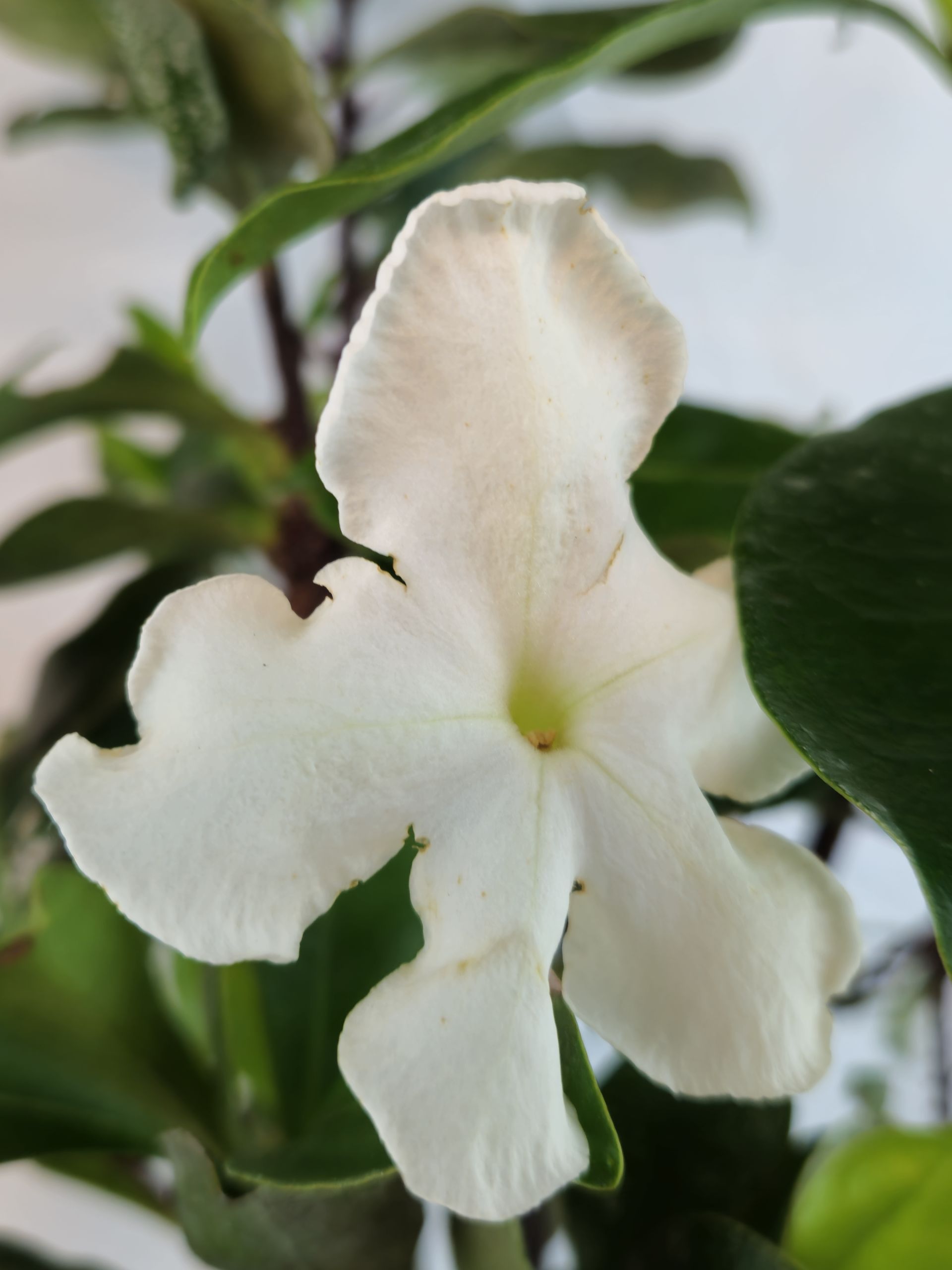- Home
- Flowering plants
- Brunfelsia Nitida (Lady of the night, Cuban raintree)
Brunfelsia Nitida (Lady of the night, Cuban raintree)
Common names: Brunfelsia Americana, Cuban raintree, Lady of the night,

usda zones
sunlight
Soil & water
fauna
Plant description
Brunfelsia nitida is a stunning addition to any night-time fragrance garden, with its white tubular flowers emitting a spicy, clove-like aroma after sunset. Perfect for creating a magical evening atmosphere in your outdoor space. For this reason, most people like planting this shrub near swimming pools or patios where they may congregate in the evening.
Pollinated flowers develop a round fruit that turns orange when mature, adding another ornamental aspect to the plant. The fruits are not edible.
In general, these shrubs can reach a height of 6 to 10 feet (approximately 1.8 to 3 meters) or even taller under optimal conditions. However, it’s important to note that individual plants may exhibit some variation in their growth patterns.
Regular pruning can also impact the overall height and shape of the plant. If you wish to maintain a certain size or shape, periodic pruning can help achieve and control the desired appearance.
When considering the height of Brunfelsia nitida in your garden, be sure to provide adequate space for its growth and consider the potential for upward and outward expansion. Additionally, factors such as soil quality, sunlight exposure, and water availability can influence the plant’s overall health and growth rate. If you have specific height preferences or constraints in your garden, monitoring and managing the plant’s growth through pruning and proper care can help you achieve the desired outcome.
how to grow Brunfelsia nitida (lady of the night)
This plant thrives in loamy, fertile, humus-rich soil with good drainage. Many species in this genus grow wild in alkaline soils and, in non-alkaline soils, all members of the genus can benefit from the addition of some ground limestone
How to take care of Brunfelsia nitida
Fertilizer
Brunfelsia nitida benefits from regular, balanced fertilizer applications during the growing season. Use a slow-release fertilizer with a balanced NPK ratio (nitrogen, phosphorus, and potassium). For best results use slow release fertilizer.
watering
Water on a regular basis. Though these plants are considered moderately drought-tolerant once established, they do best with regular irrigation and time between waterings to dry out a bit.
Apply a layer of organic mulch around the base of the plant. Mulch helps retain soil moisture by reducing evaporation, regulating soil temperature, and suppressing weeds.
Propagation
- Seeds – it has a short period of viability and does not tolerate desiccation. Sown fresh, it germinates within 2 – 4 weeks.
- Air layering
hardiness
Brunfelsia nitida, or the Lady of the night plant, is generally considered to be hardy in USDA Hardiness Zones 9-11. In these zones, the climate is warm and tropical, which suits the preferences of the plant. This shrub is native to the subtropical and tropical regions of South America.
If you are in a region with colder temperatures, you might need to grow Lady of the night as a potted plant and bring it indoors during the colder months. In cooler climates, the plant may not tolerate frost, and its growth could be limited.
light
Cuban raintree typically prefers a location with full sun to partial shade. This means it does well in areas that receive at least 6 hours of direct sunlight per day. However, it can tolerate some dappled or filtered shade.
While the plant can tolerate some afternoon shade, it often benefits from receiving morning sunlight. Morning sun is generally less intense than the afternoon sun and helps the plant to photosynthesize efficiently.
If you are growing Brunfelsia nitida as a potted plant indoors, place it near a bright window where it can receive plenty of indirect sunlight. Supplemental artificial lighting may be necessary if natural light is limited.
soil
Brunfelsia nitida prefers well-draining soil. This helps prevent waterlogged conditions that can lead to root rot.







